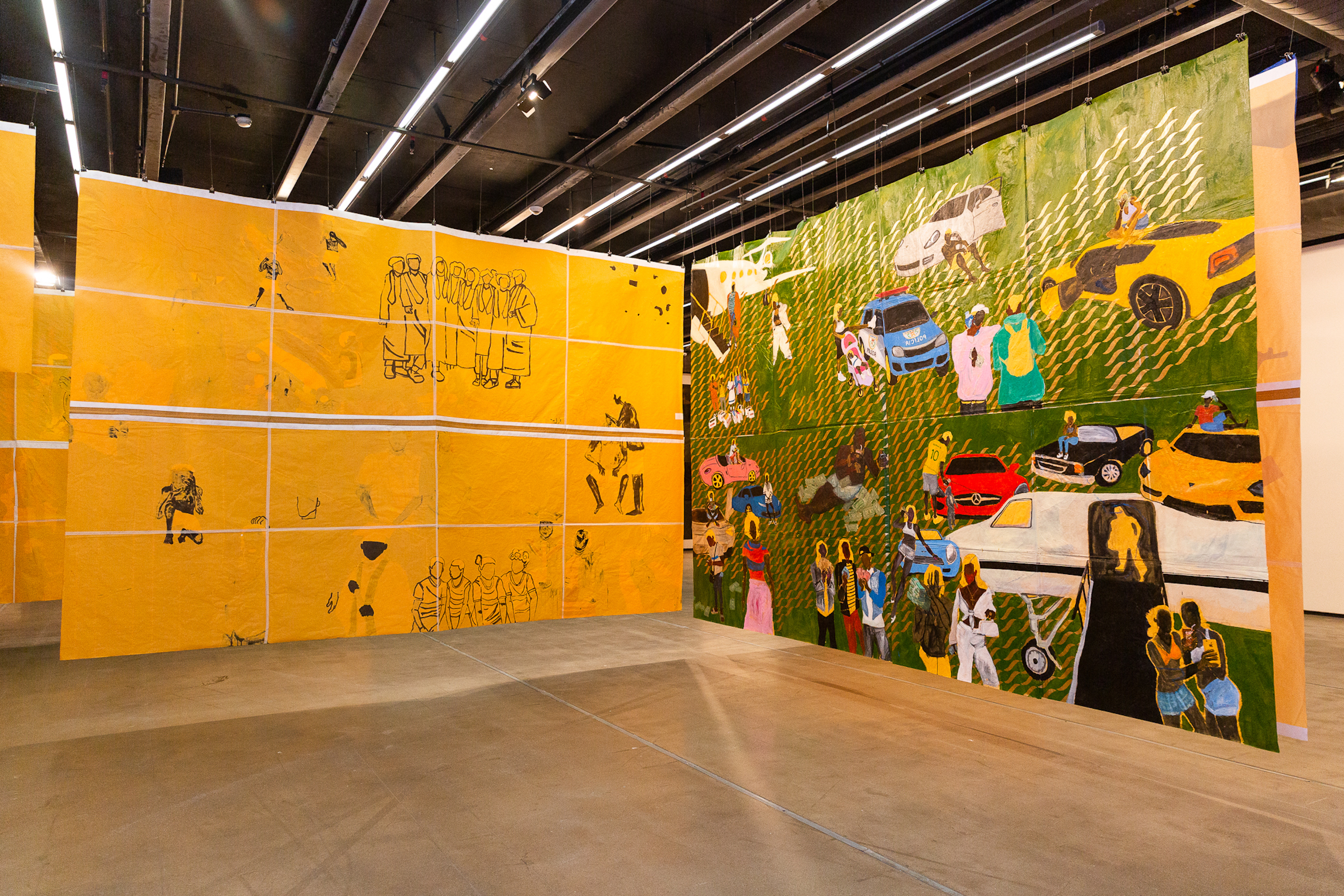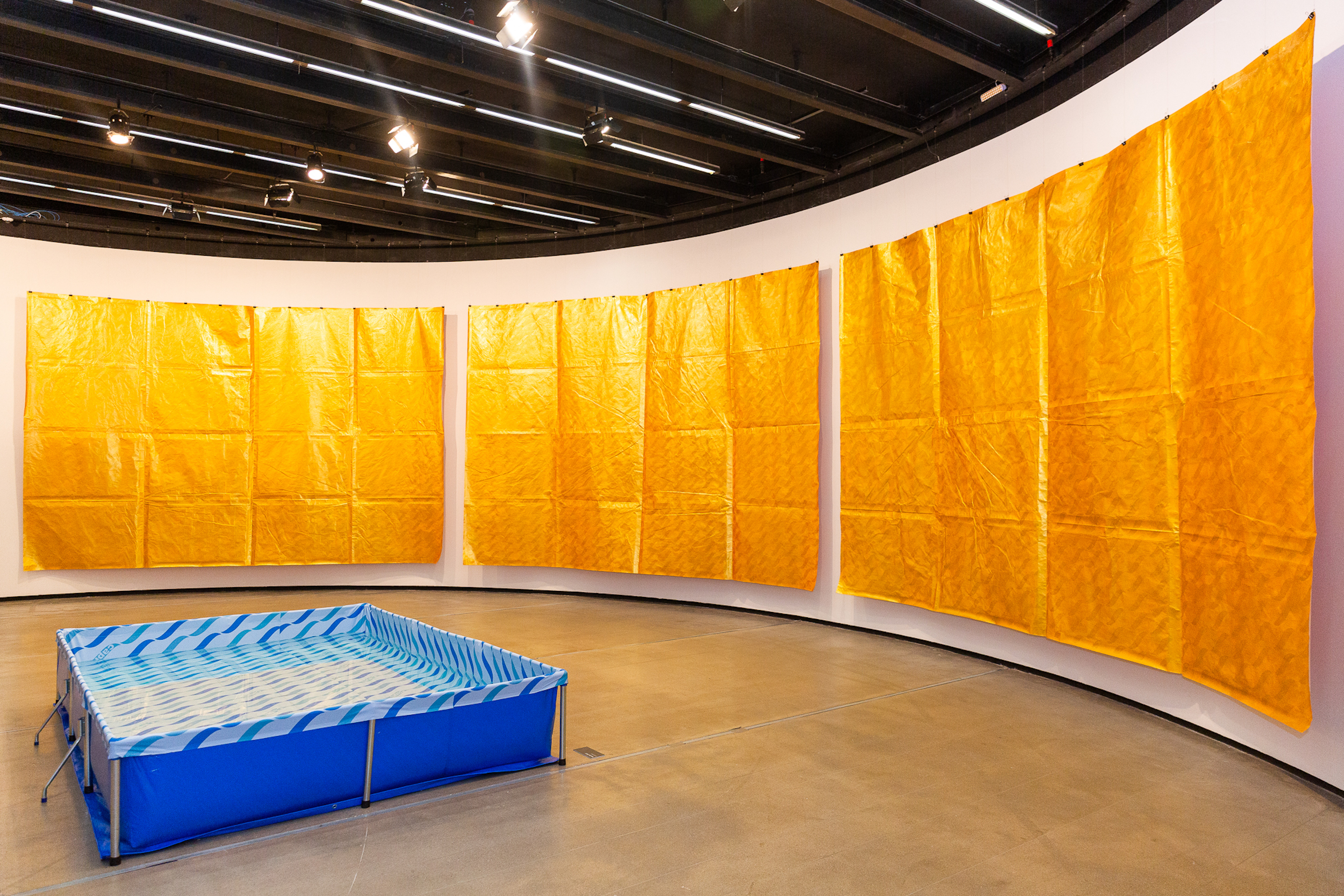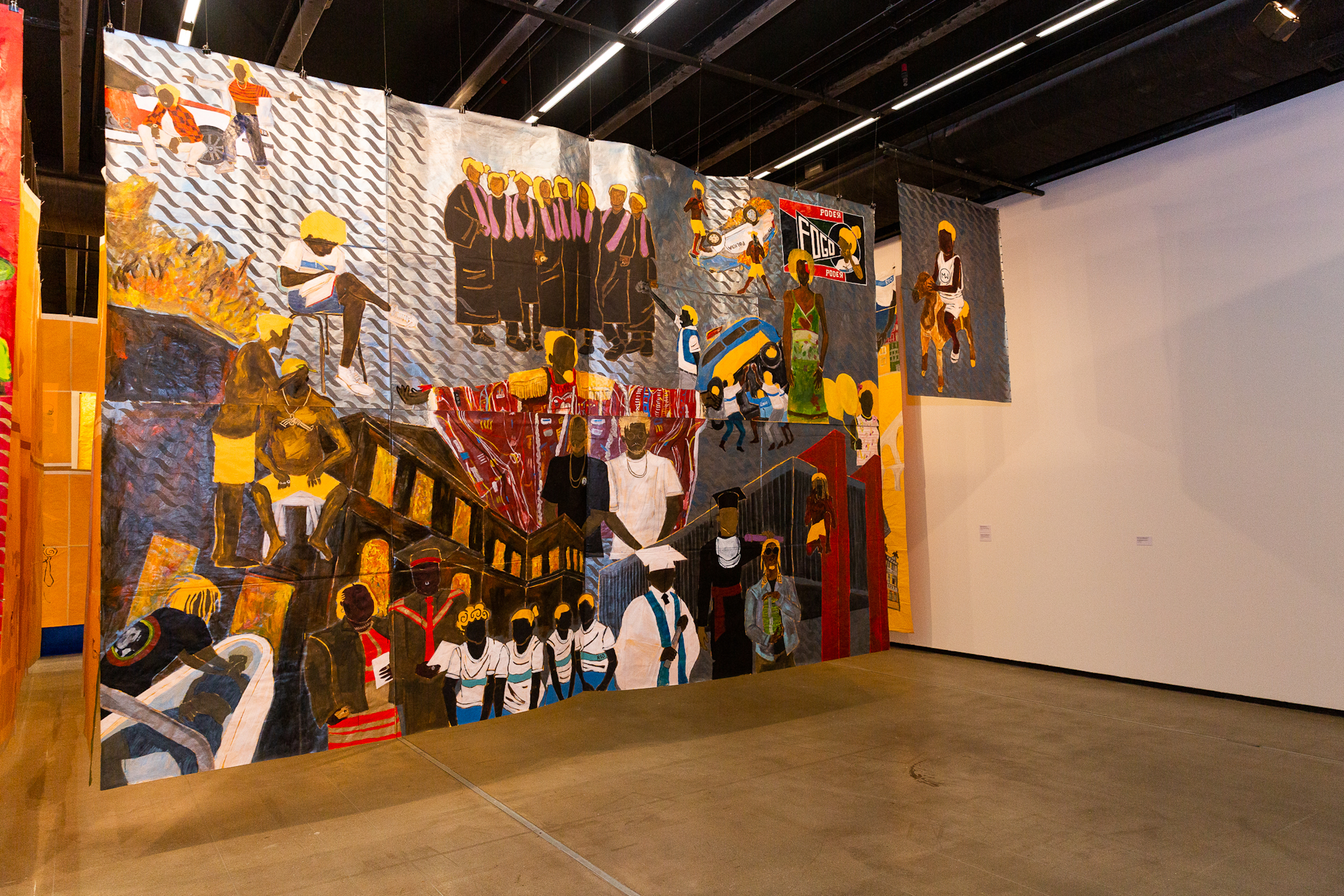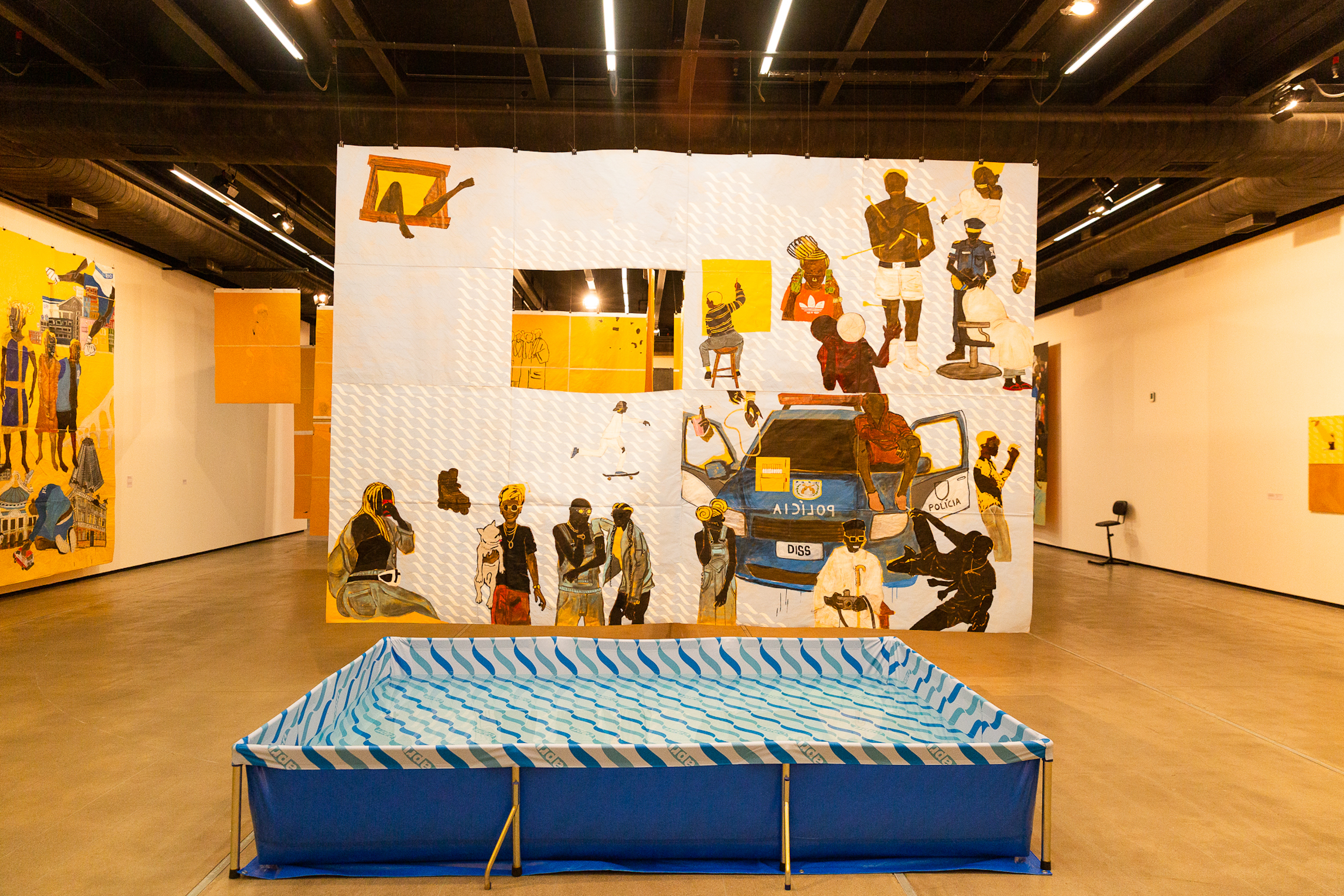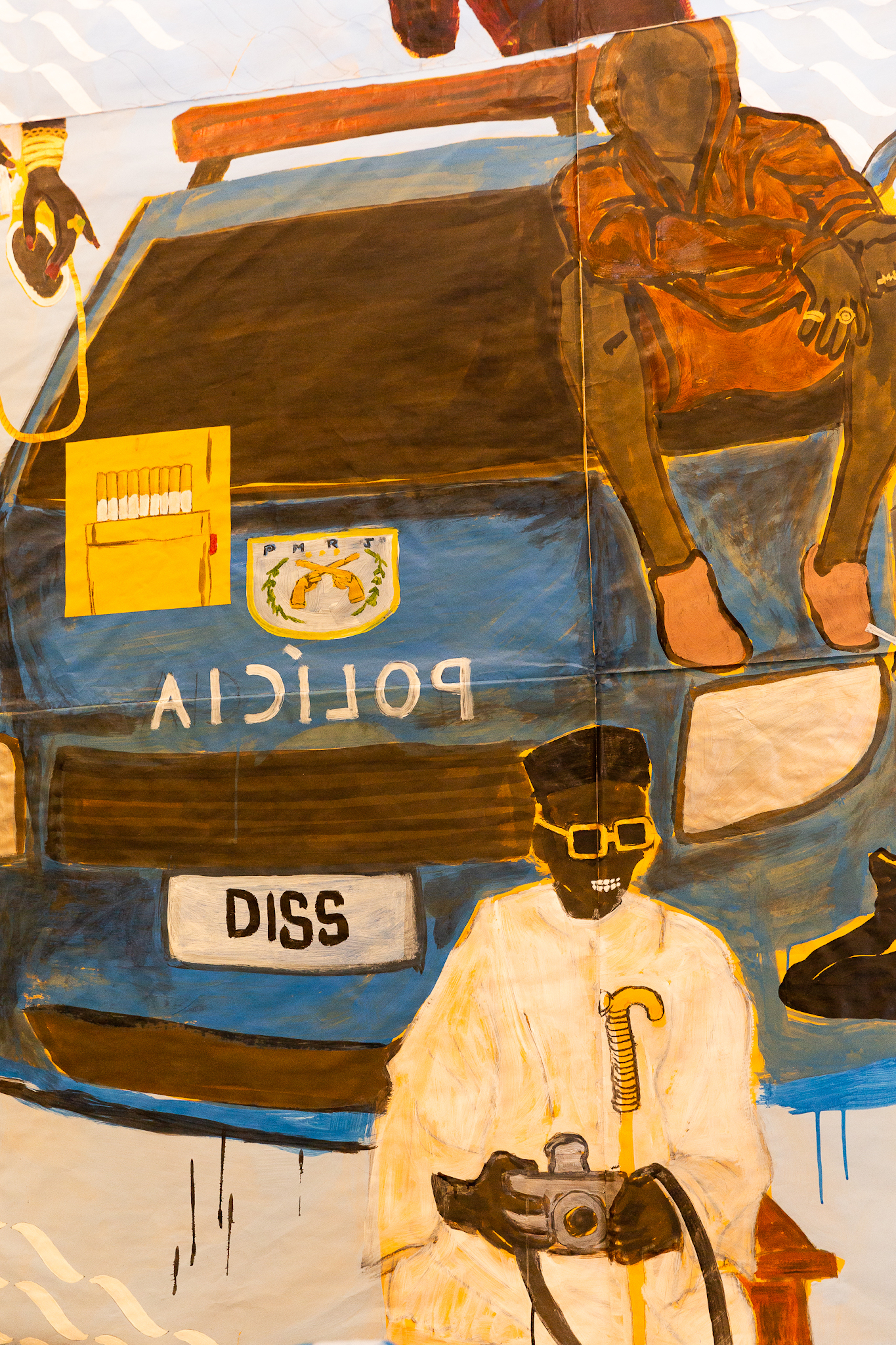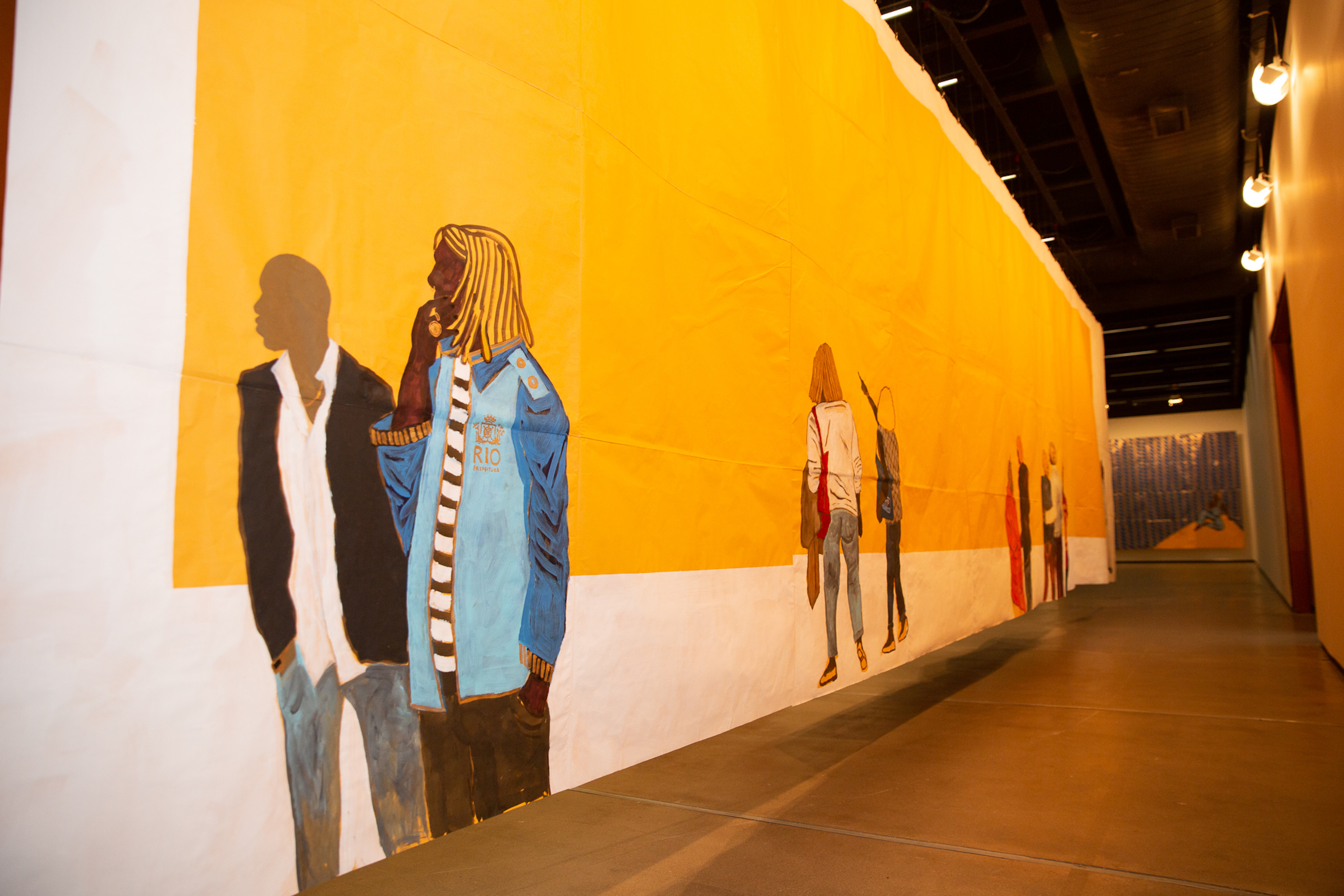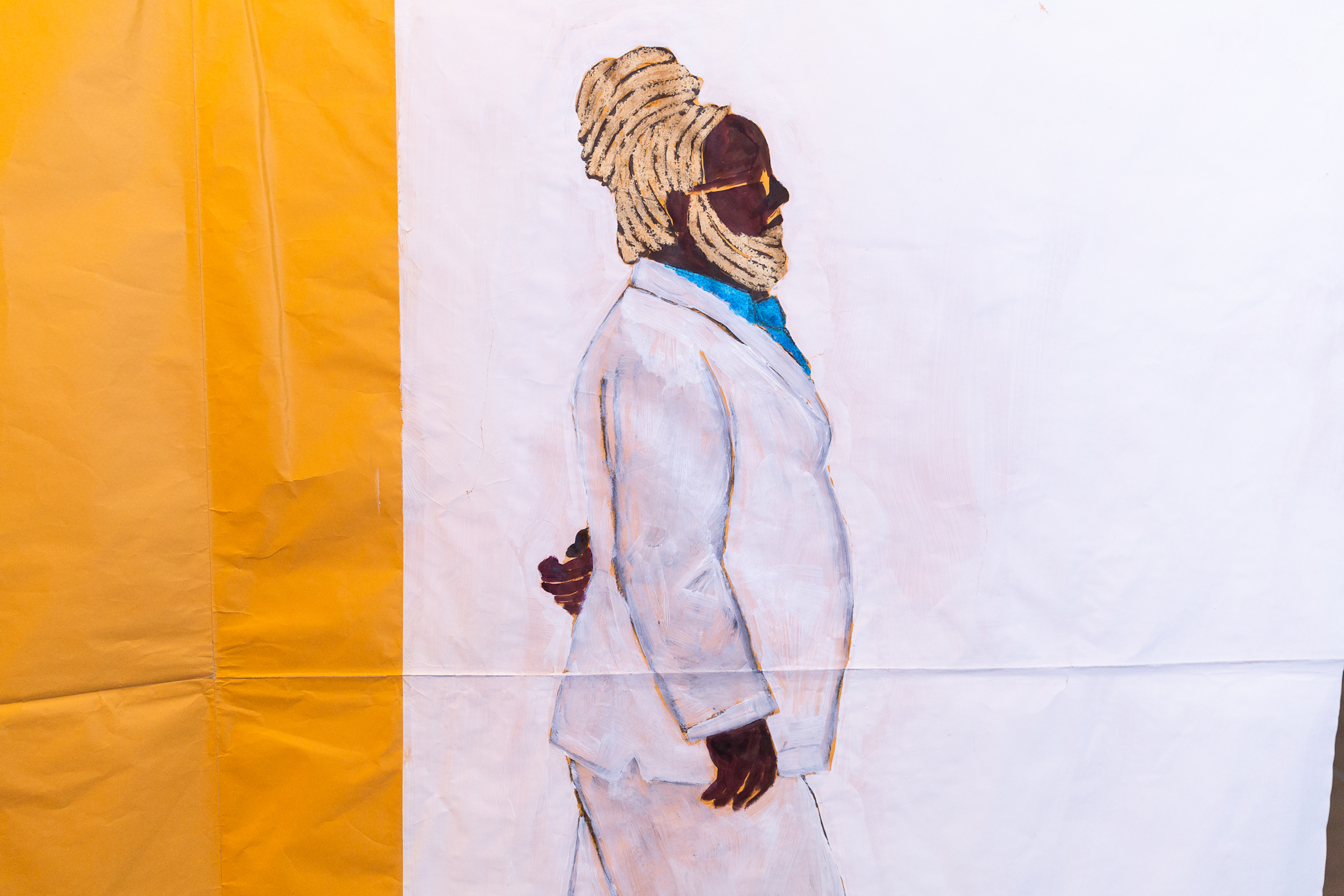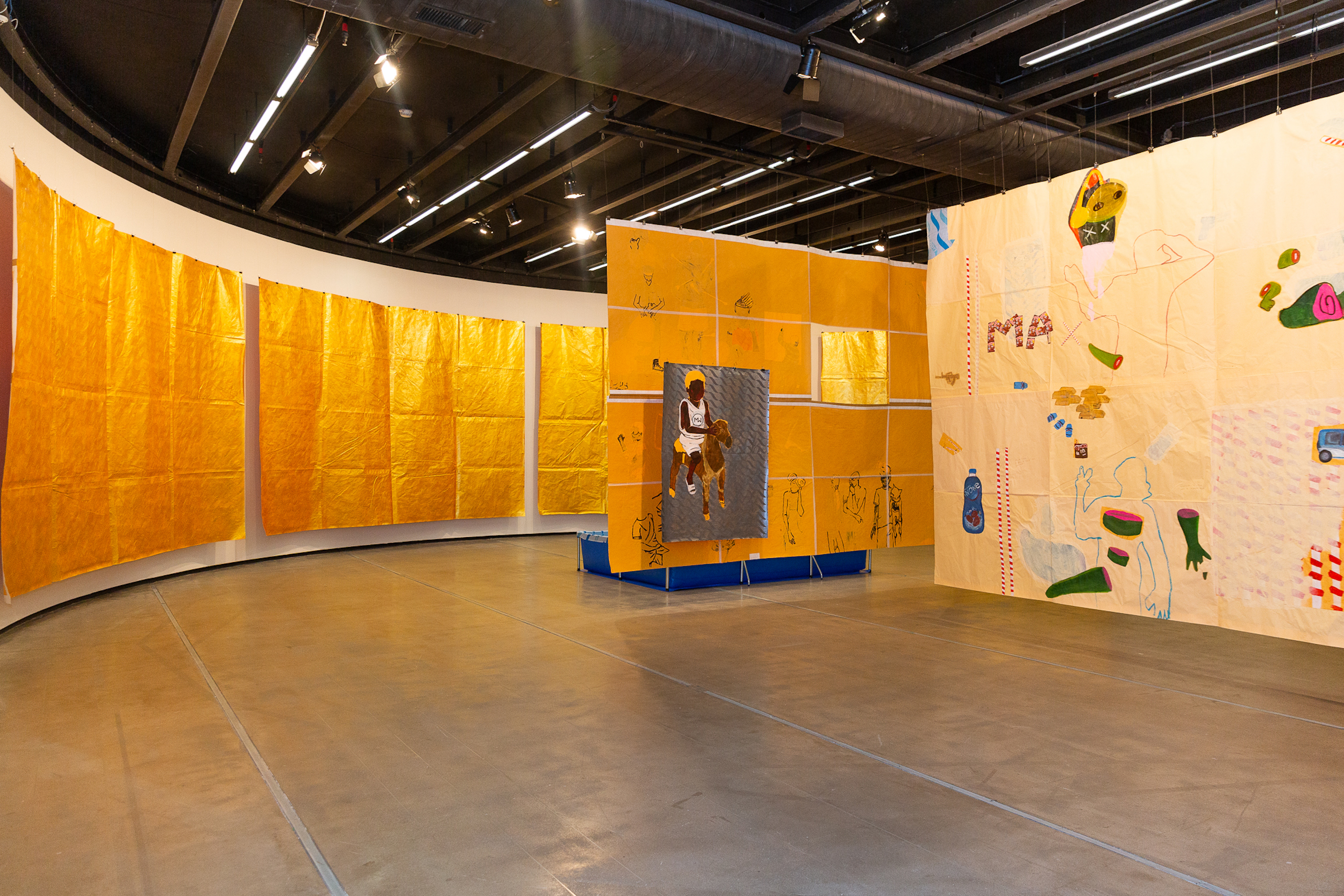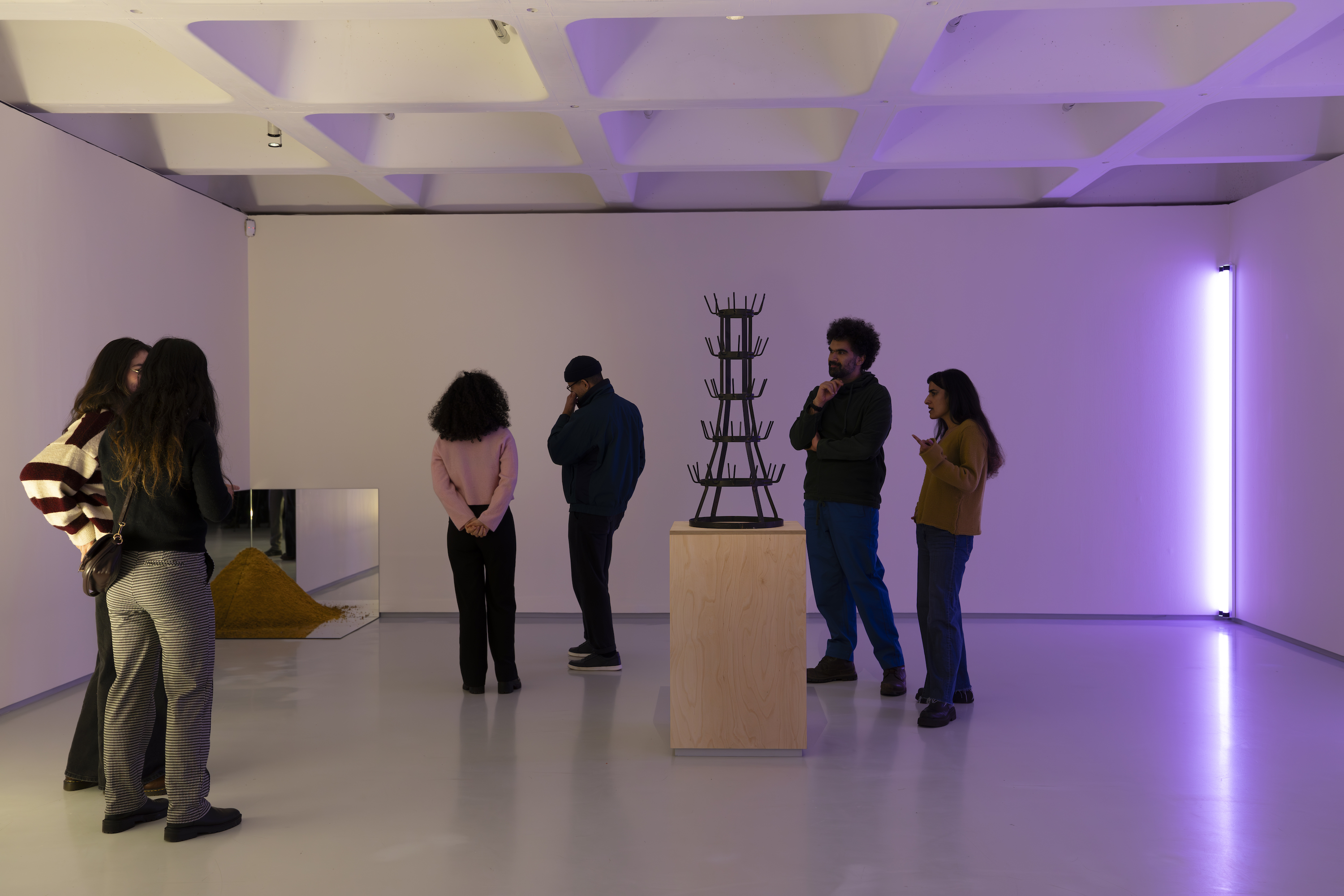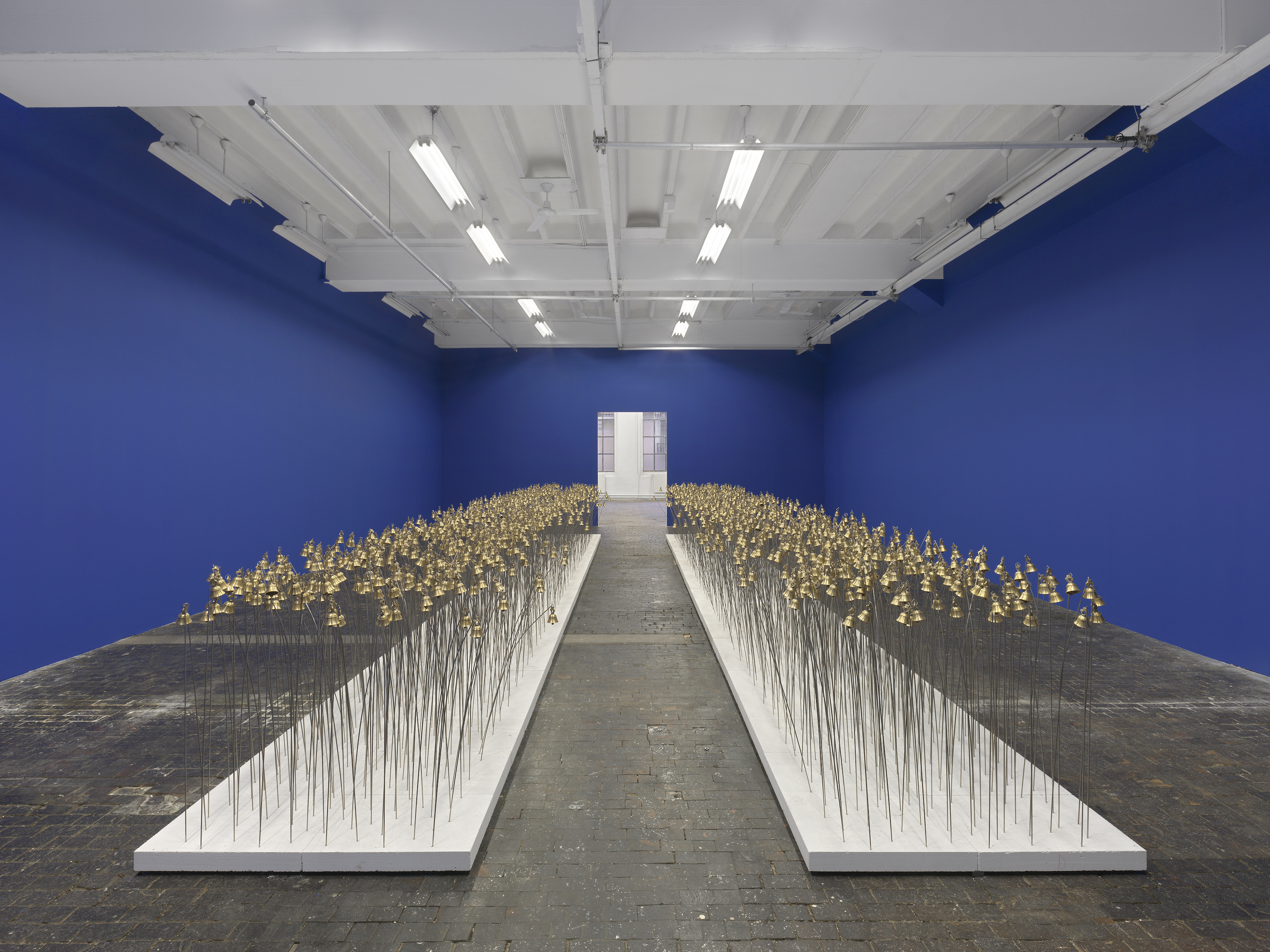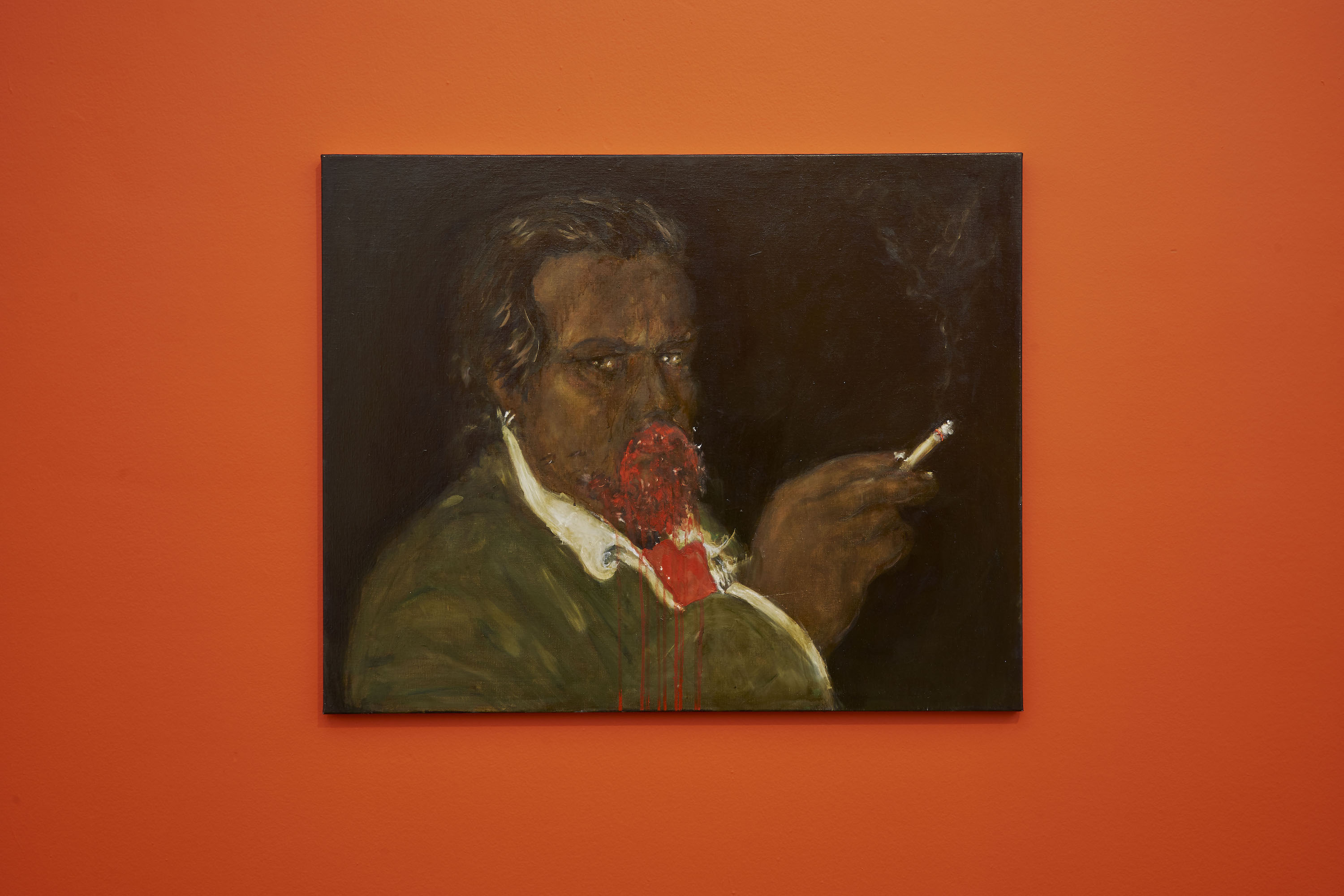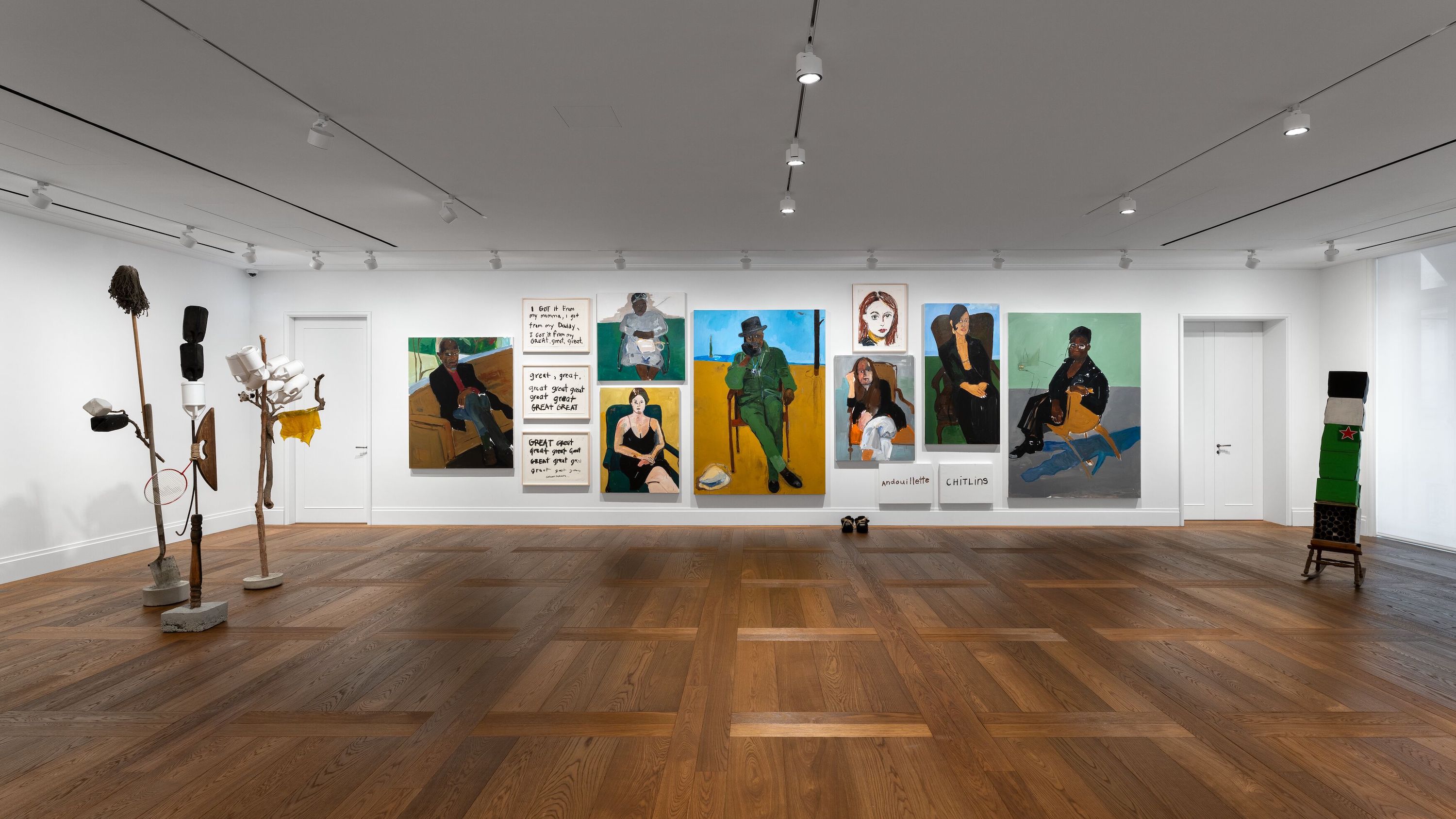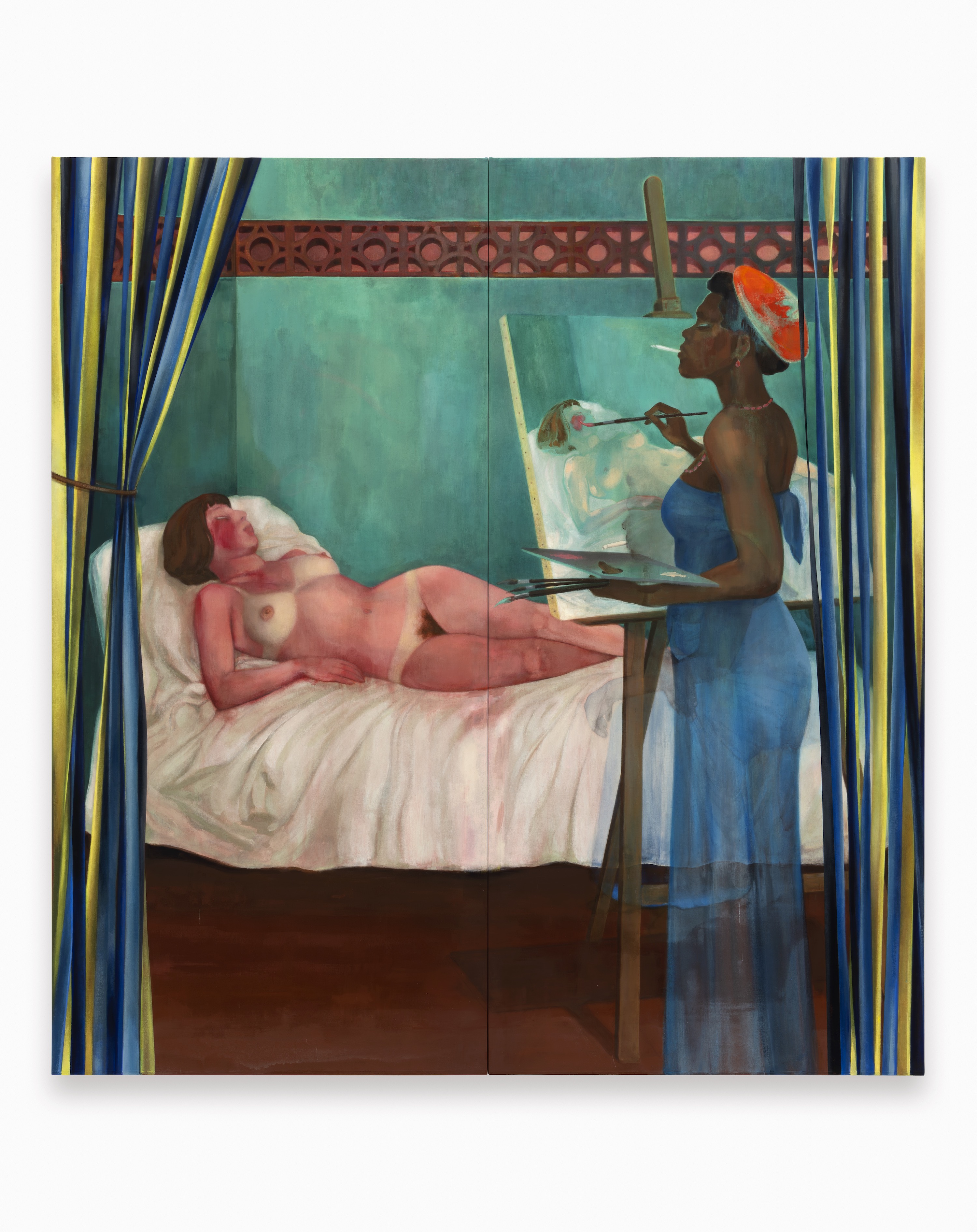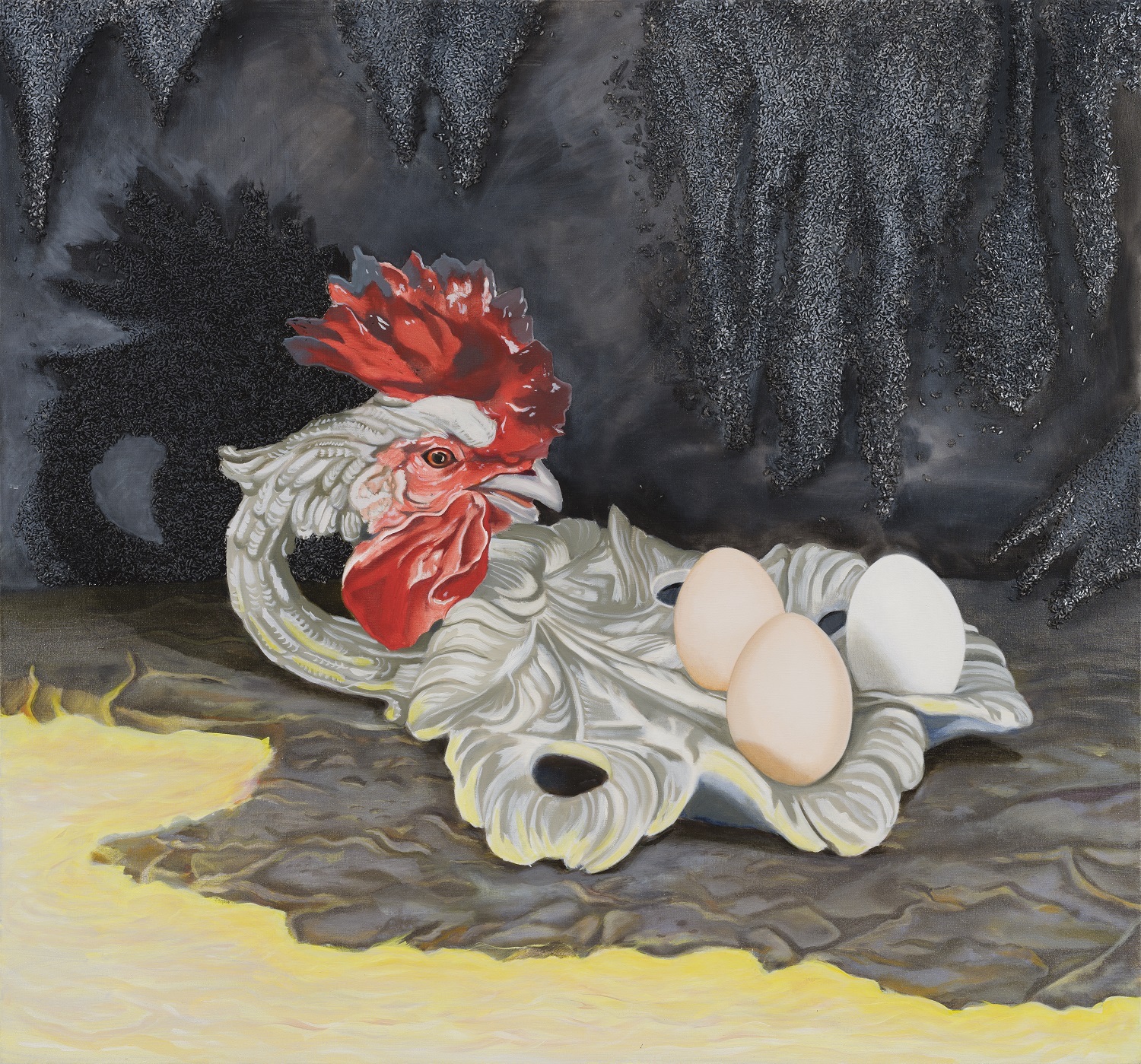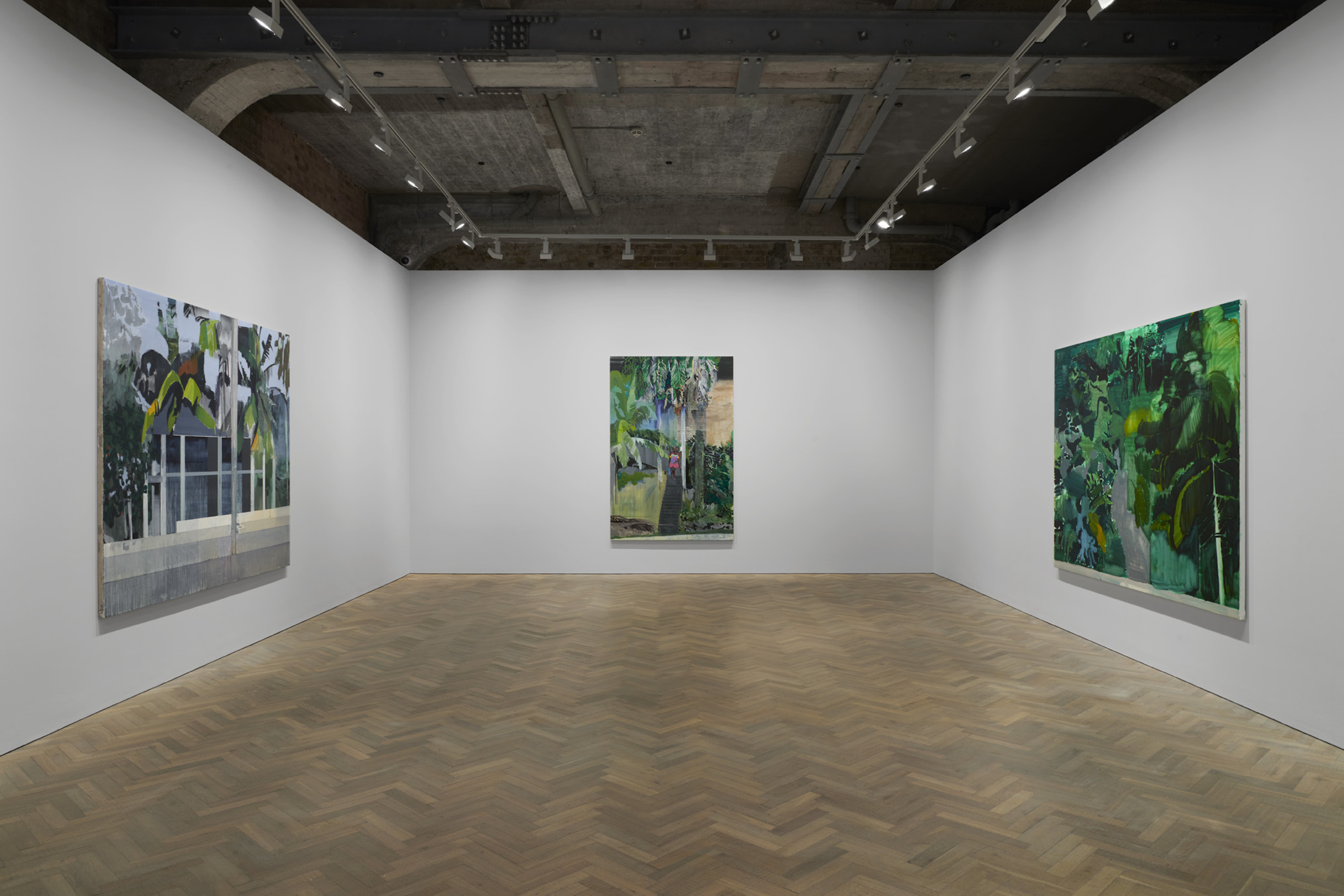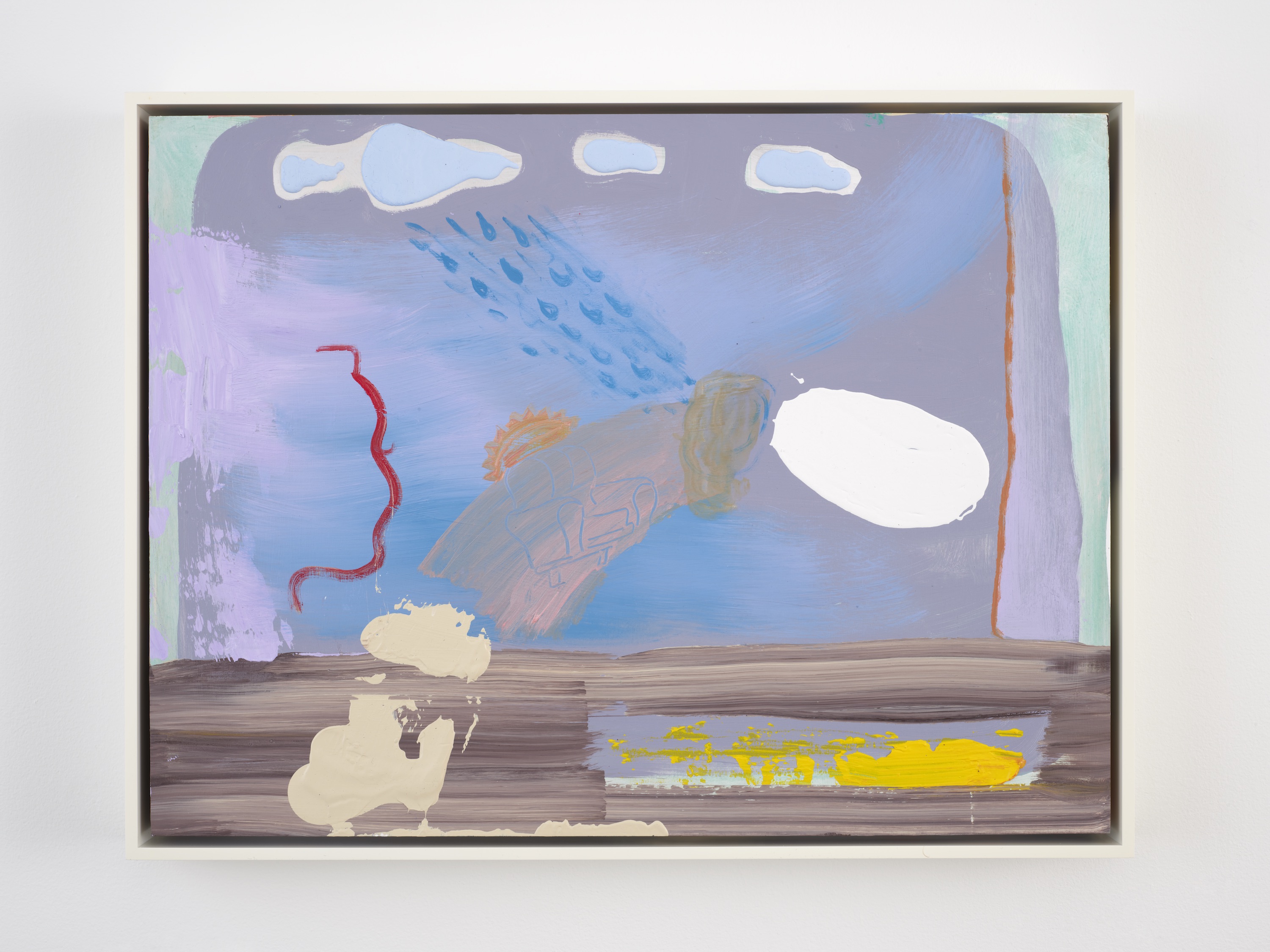May 8–July 25, 2021
In early 2020 I attended a protest outside the police headquarters in downtown São Paulo. The small crowd had come to hear from the relatives of nine young people, all Black, who had been killed in a stampede when police fired rubber bullets indiscriminately across a packed baile, a dance party, in the south of the city. The authorities claim that these nights are a hotbed of gang activity and are rife with drugs. One young woman who spoke to the crowd, her voice flat, described how her 16-year-old brother, Dennys, worked six days a week to support the family and went to the party on his one day off. He never came home. This May, 27 residents of Jacarezinho, in Rio de Janeiro, died during a drug raid. Earlier this month, a young woman called Kathlen Romeu, who was pregnant, was fatally caught in the crossfire of a police shootout in the north of the city.1
Both police violence and parties are subjects of the thirteen paintings by Maxwell Alexandre at Instituto Tomie Ohtake. In one work from “Pardo é Papel”—the series that dominates the exhibition and in which the artist depicts his scenes of favela life using acrylic, graphite, and dye on taped-together sheets of brown paper—a police car is seen being overturned; in another a woman kicks in the windows of a patrol vehicle. Dozens of these discrete vignettes are liable to jostle within a single work, the sheer volume of detail pulling you in to each painting. Yet scenes of celebration outweigh those of trauma. Alongside the riot depicted in Éramos as cinzas e agora somos o fogo (diss) [We were the ashes and now we are the fire (diss), all works 2019], the artist has painted groups receiving their diploma certificates and an evangelical church choir.
Some canvases float suspended on wires from the ceiling. Others are installed with bulldog clips against the gallery walls; most are over three meters in length, some as many as seven. There’s a maze-like group of these giant pictures, though the exhibition ends with a real-life paddling pool, the kind which commonly provides ad-hoc respite from the favela heat, installed at the far side of the gallery. The series title, which roughly translates as “brown is paper,” refers both to the colour of the packaging paper the artist uses as a support for his paintings and to a word generically applied to Afro-Brazilians. Most of the figures Alexandre depicts are friends and neighbors from Rocinha, the Rio favela in which he lives and from where he runs his studio; others will be recognizable to those with any knowledge of recent Brazilian politics and culture. Cantos de esquinas [roughly: Corner Songs] shows Marielle Franco—the Black bisexual Rio councilwoman, a rare representative of favela life, who was assassinated in March 2018—standing, fist raised, at a podium: a triumphant rather than tragic figure. A lua quer ser preta, se pinta no eclipse (diss) [The moon wants to be black, paints itself in the eclipse (diss)] shows dozens of figures dancing and partying, their faces featureless, but life evident in the crouching, twerking, break-dancing, hands-in-the-air, back-flipping, high-kicking dance shapes being thrown. It’s a moment of baile joy, whatever the harshness of life on the periphery.
So quando tu ta com folhas geral gosta de salada [Only when you have leaves, you generally like salad] is dedicated to the material dreams of favela life as presented in celebrities’ social media posts and music videos: a man in a Brazilian football shirt printed with the name of its most famous player, Neymar Jr, leans on the bonnet of a tinted windowed Merc; a shirtless guy with bleached dreaded hair holds a wad of reais above his shoulder. There is a private jet. It’s also in this work that the woman kicks in the cop car’s windshield. Alexandre leans into aspirational clichés such as these. Cultural references old and new abound in another work which features several album covers—Nina Simone, Brazilian rapper Djonga—as well as portraits of Alexandre’s peers in Brazilian contemporary art. There’s Paulo Nazareth—who, like Alexandre, is part of a new generation of Black artists gaining attention internationally—recognizable in his woven palm headpiece. Or Antonio Obá performing Acts of Transfiguration: Disappearance of a Recipe for a Saint, a 2015 work made infamous by the backlash it provoked amongst right-wing activists (the work was picketed by mobs when it was shown two years later, and the artist received death threats that forced him to flee the country). Golden Shower, a rare work on canvas, features a man showering in hard lines of yellow paint, a reference surely to Jair Bolsonaro’s attempted denigration of carnival culture when, in 2019, he tweeted a sexually explicit video shot at a São Paulo bloco.
Alexandre’s work takes the formal quality of history paintings—where several scenes inhabit the same frame—while tracing lines from muralism into the gallery. These are social documents too: postcards from a world of precarity alien to many gallery goers (certainly those of glitzy spaces like David Zwirner in London and MAC Lyon, where Alexandre has recently exhibited), an intersection of race and social status absent from museum walls until recently. Favelas are insular places, operating autonomously from the state apparatus. Where the government has failed to provide for welfare and culture, the evangelical churches step in. When the state stalls on employment, security, and policing, the organized crime gangs often bring money and a brutal kind of order to a neighborhood. Alexandre’s paintings express the baroque complexity of these situations in which life and death are uncomfortably close. Moreover, by allowing multiple moments to operate simultaneously within a single brazen work—joyful, sad, everything in between—he engages in a form of world-making in which identities are multiple, coded to context, and forever in flux.
https://www.hrw.org/news/2021/05/31/brazil-investigate-rio-police-command-deadly-raid; Flávia Milhorance, “‘Makes you sick’: fury in Rio as pregnant 24-year-old killed amid police raid,” the Guardian (June 2021), https://www.theguardian.com/global-development/2021/jun/10/makes-you-sick-fury-in-rio-as-pregnant-24-year-old-killed-amid-police-raid.
